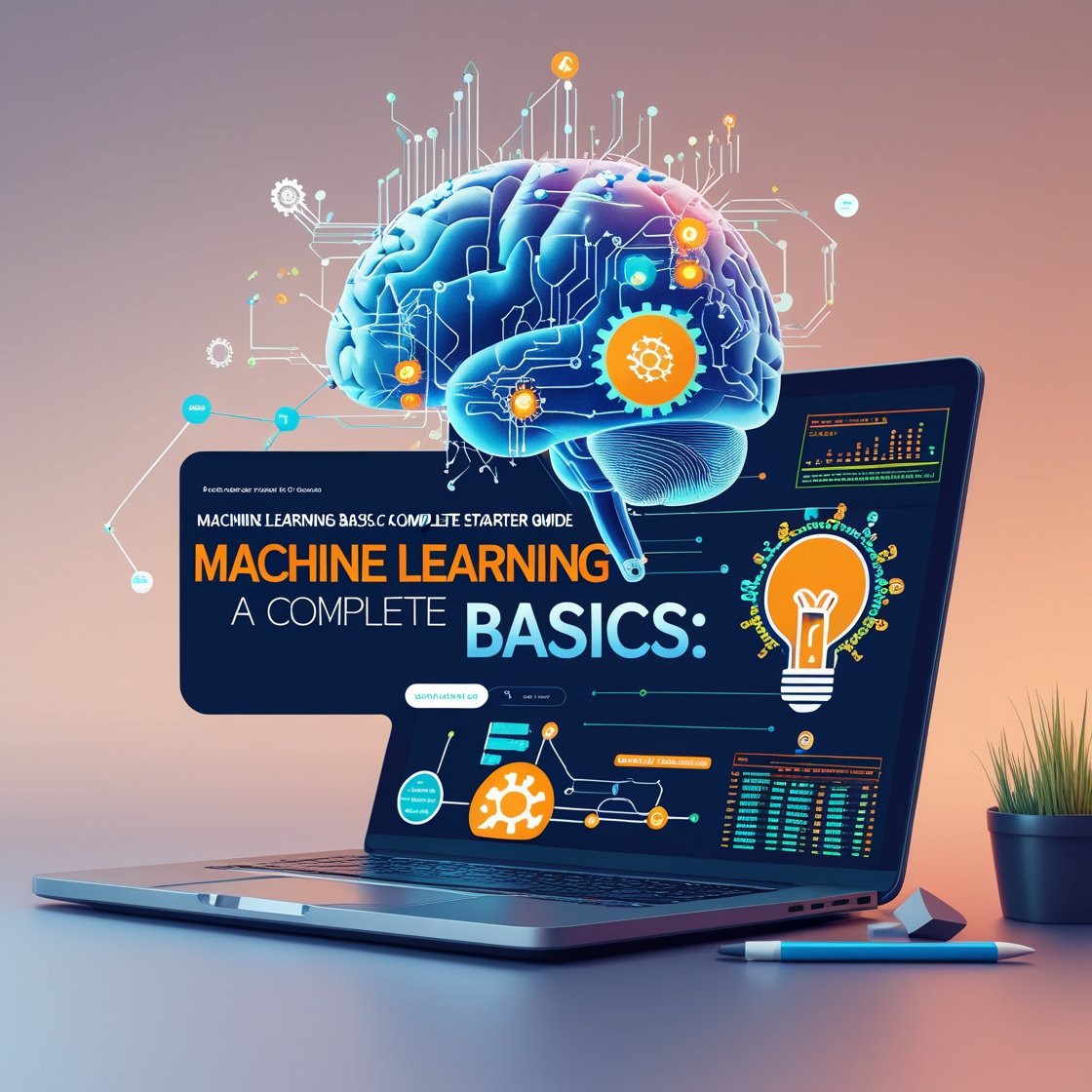Meta Description: Understand the core concepts of machine learning with this beginner-friendly guide.(Oracle Documentation)
🤖 Machine Learning Basics: A Complete Starter Guide
In the ever-evolving landscape of technology, machine learning (ML) stands out as a transformative force, revolutionizing industries and daily life alike. From personalized recommendations on streaming platforms to advancements in healthcare diagnostics, ML is at the forefront of innovation. This comprehensive guide aims to demystify the fundamentals of machine learning, providing a clear and accessible introduction for beginners eager to explore this dynamic field.
🧠 What Is Machine Learning?
At its core, machine learning is a subset of artificial intelligence that enables computers to learn from data and make decisions without explicit programming. Unlike traditional software that follows predefined instructions, ML algorithms identify patterns within data, allowing systems to improve their performance over time through experience.
🔍 Key Components of Machine Learning
Understanding the foundational elements of ML is crucial for grasping how algorithms function:
- Data: The raw information fed into ML models, serving as the foundation for learning.
- Algorithms: Mathematical models that process data to identify patterns and make predictions.
- Model: The output of an algorithm after training, capable of making decisions based on new data.
- Training: The process of feeding data into an algorithm to enable the model to learn.
- Inference: The application of a trained model to make predictions on new, unseen data.
🧪 Types of Machine Learning
Machine learning encompasses various approaches, each suited to different tasks:
1. Supervised Learning
In supervised learning, algorithms learn from labeled datasets, where each input is paired with the correct output. This approach is ideal for tasks like classification and regression. For instance, in image recognition, a model can be trained to identify objects by learning from a dataset of labeled images.
2. Unsupervised Learning
Unsupervised learning involves algorithms identifying patterns in data without labeled outputs. It’s commonly used for clustering and association tasks, such as grouping customers based on purchasing behavior or discovering hidden patterns in data.
3. Reinforcement Learning
In reinforcement learning, agents learn to make decisions by performing actions in an environment and receiving feedback through rewards or penalties. This approach is widely used in robotics and game-playing AI, where the system learns optimal strategies through trial and error.
🛠️ The Machine Learning Workflow
Embarking on a machine learning project typically follows these steps:
- Data Collection: Gathering relevant and high-quality data is the first step in any ML project.
- Data Preprocessing: Cleaning and transforming raw data to ensure it’s suitable for analysis.
- Feature Engineering: Selecting and creating meaningful features that enhance model performance.
- Model Training: Applying algorithms to data to build a predictive model.
- Model Evaluation: Assessing the model’s accuracy and effectiveness using various metrics.
- Model Deployment: Integrating the model into real-world applications for practical use.
🧰 Essential Tools for Machine Learning
Several tools and libraries facilitate the development and implementation of ML models:
- Python: A versatile programming language widely used in ML for its simplicity and extensive libraries.
- TensorFlow: An open-source library developed by Google for building and training neural networks.
- Scikit-learn: A Python library that provides simple and efficient tools for data mining and data analysis.
- Keras: A high-level neural networks API, written in Python, that runs on top of TensorFlow.
🧭 Real-World Applications of Machine Learning
Machine learning is not just a theoretical concept; it’s actively shaping various industries:
- Healthcare: ML models assist in diagnosing diseases, predicting patient outcomes, and personalizing treatment plans.
- Finance: Algorithms detect fraudulent activities, automate trading, and assess credit risks.
- Retail: Personalized recommendations and inventory management are optimized using ML techniques.
- Transportation: Autonomous vehicles and route optimization rely heavily on ML algorithms.
📊 Evaluating Machine Learning Models
Assessing the performance of ML models is vital to ensure their effectiveness:
- Accuracy: The proportion of correct predictions made by the model.
- Precision and Recall: Metrics that evaluate the relevance and completeness of the model’s predictions.
- F1 Score: A balance between precision and recall, providing a single metric for model performance.
- Confusion Matrix: A table used to describe the performance of a classification model.
🧩 Challenges in Machine Learning
While ML offers numerous benefits, it also presents challenges:
- Data Quality: Poor or biased data can lead to inaccurate models.
- Overfitting: Models that perform well on training data but poorly on new data.
- Interpretability: Complex models, like deep neural networks, can be difficult to understand and explain.
- Computational Resources: Training sophisticated models requires significant computational power.
🌱 Getting Started with Machine Learning
For beginners eager to delve into machine learning:
- Learn Python: Familiarize yourself with Python programming, as it’s the primary language for ML.
- Explore Online Courses: Platforms like Coursera, edX, and Udacity offer courses tailored for beginners.
- Practice with Datasets: Engage with publicly available datasets to build and evaluate simple models.
- Join Communities: Participate in forums and groups to share knowledge and seek guidance.
🧾 Conclusion
Machine learning is a powerful tool that continues to transform various sectors by enabling systems to learn from data and make informed decisions. By understanding its fundamental concepts and applications, beginners can embark on a journey into this exciting field. Remember, the key to mastering machine learning lies in continuous learning, practice, and staying updated with the latest advancements.




